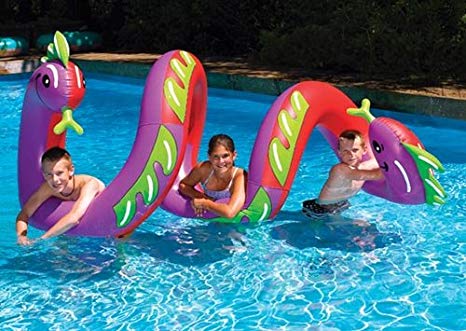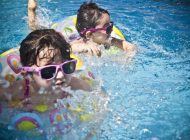Exposed Risks Of Cancer Through Water Toys To Children
Medical Team at Anderson Diagnostics Advises Parents About Using Inflatable Pool Toys
Kids love to play in the swimming pool. If you have bought toys and new costumes for their swimming session, you need to be aware of certain important things. There are a lot of water toys and swimming gear where your kids love to play and have fun. If you have selected inflatable water toys like armbands and beach balls, here is an important thing you should know. Medical Team at Anderson Diagnostics has warned parents to keep children away from inflatable water toys. The researchers have found that these toys contain some potentially dangerous substances which may put your kid at the possibility of cancer.
 Several tests have been conducted on two bathing rings, swimming air bands, and an inflatable beach ball. The researchers took samples from each piece of material and analyzed. They found that water toys are made using PVC (polyvinyl chloride), which is hazardous for children’s health.
Several tests have been conducted on two bathing rings, swimming air bands, and an inflatable beach ball. The researchers took samples from each piece of material and analyzed. They found that water toys are made using PVC (polyvinyl chloride), which is hazardous for children’s health.
Polyvinyl chloride is the third most produced synthetic plastic in the world. Several earlier studies have proved that it is dangerous to manufacture PVC plastic as it releases dioxins during the production stage. The dioxins are said to be a potential carcinogen and cause various kinds of health issues like birth defects, cancer, developmental and learning delays and diabetes. PVC is not only found in these toys, but it is also found in various things we use in our day to day lives. It is seen from credit cards to bathroom curtains.
According to WHO’s (World Health Organization) IARC (International Agency for Research on Cancer) the chemical that has been used in manufacturing PVC is vinyl chloride. It is said to be a well-known human carcinogen.
The carcinogens are potential substances that have chances of resulting in cancer in humans. The water toys release a unique smell due to hazardous molecules present in them. The researchers extracted the odor from all the samples and found out the main odorants. It was found that about 13 odors are quite dangerous out of 32 to 46 odors taken from each sample.
Medical Team at Anderson Diagnostics Shares Problems Of Water Toys

It is common for parents to give water toys or bath toys for children. It is quite hazardous and four out of five toys are filled with harmful bugs. Medical Team at Anderson Diagnostics claimed that plastic ducks are major breeding grounds for fungi and bacteria. When you notice the toys, you can see slimy films inside.
When kids squeeze the water from the toys to their faces, there are chances to be at risk of stomach, ear and eye infections. The humid bathroom and soap motivate the solid growth of germs along with urine and sweat in the bathwater.
It is possible to reduce the risk by cleaning and maintaining the toys in a clean and dry place. It is also recommended to boil the toys and keep the toys dry after use for additional care.
One of the best ways to safeguard your child from the exposure of biofilms is to close the hole. But, they will not have any fun when you close the hole and give to them for playing. Check Here – https://www.globosurfer.com/best-water-toys-toddlers/ – best water toys for toddlers in 2019.
Medical Team at Anderson Diagnostics Suggests To Provide Sustainable Toys For Kids
By offering toys that are made using sustainably managed wood scraps or woods from local makers, you can keep your kids safe and free from infections, diseases or medical conditions. There are several companies around the world that produces toys using 100% renewable energy. They ensure to finish toys using food grade paints and mineral oil which are certified non-toxic and lead-free.
your kids safe and free from infections, diseases or medical conditions. There are several companies around the world that produces toys using 100% renewable energy. They ensure to finish toys using food grade paints and mineral oil which are certified non-toxic and lead-free.
Moreover, the toys are produced by following voluntary and federal guidelines governing sharp points, chemical makeup, and small parts. They ensure to make the finishing safe and coat the toy using food grade and non-toxic mineral oil that exceeds or meets the requirements by the US Department of Agriculture, US Pharmacopeia, and USFDA.
What’s more? It is recommended to safeguard your skin from various possible health risks by using alternative products or reduce products that are made using toxic materials and PVC. It is your responsibility to select and use products wisely for the wellbeing of your kids.






